Statue of Liberty Close Up and Personal
by Ken Rock, MSDC Editor
The Pedestal
The granite pedestal of the Statue was paid for entirely by private donations raised in the United States. It was designed by the eminent American architect, Richard Morris Hunt, and engineered by former Civil War general Charles P. Stone. Its variety of strong shapes and rich textures make the pedestal seem less massive as it tapers gracefully upward.
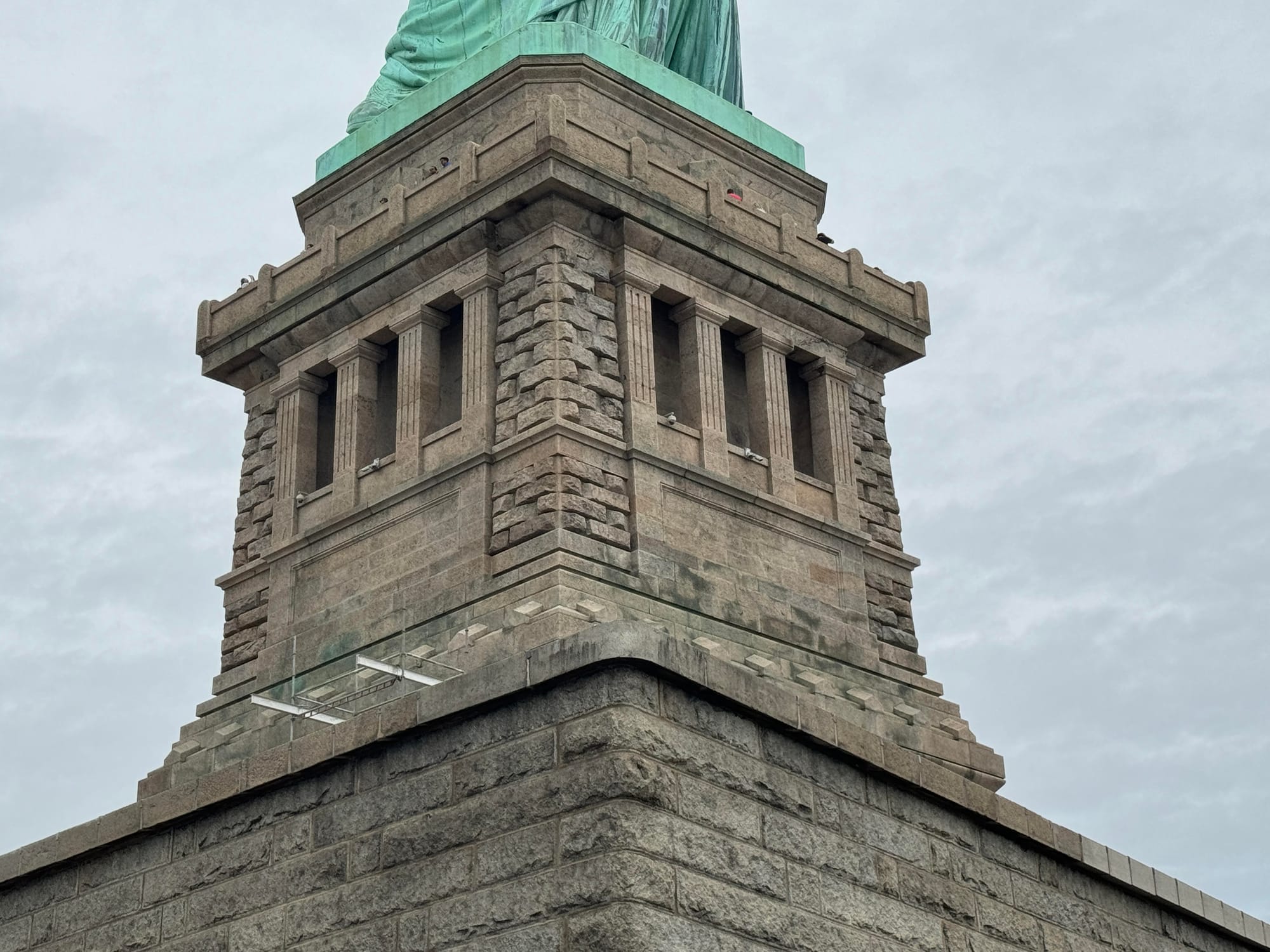
Building the Status of Liberty
The French sculptor Frederic-Auguste Bartholdi designed the Statue of Liberty like a giant puzzle. Over 300 thin sheets of copper, most of it from a copper mine in Karmoy, Norway, fit together to form the Statue's outer skin. Each copper sheet is 3/32 of an inch think, about the thickness of two American pennies.
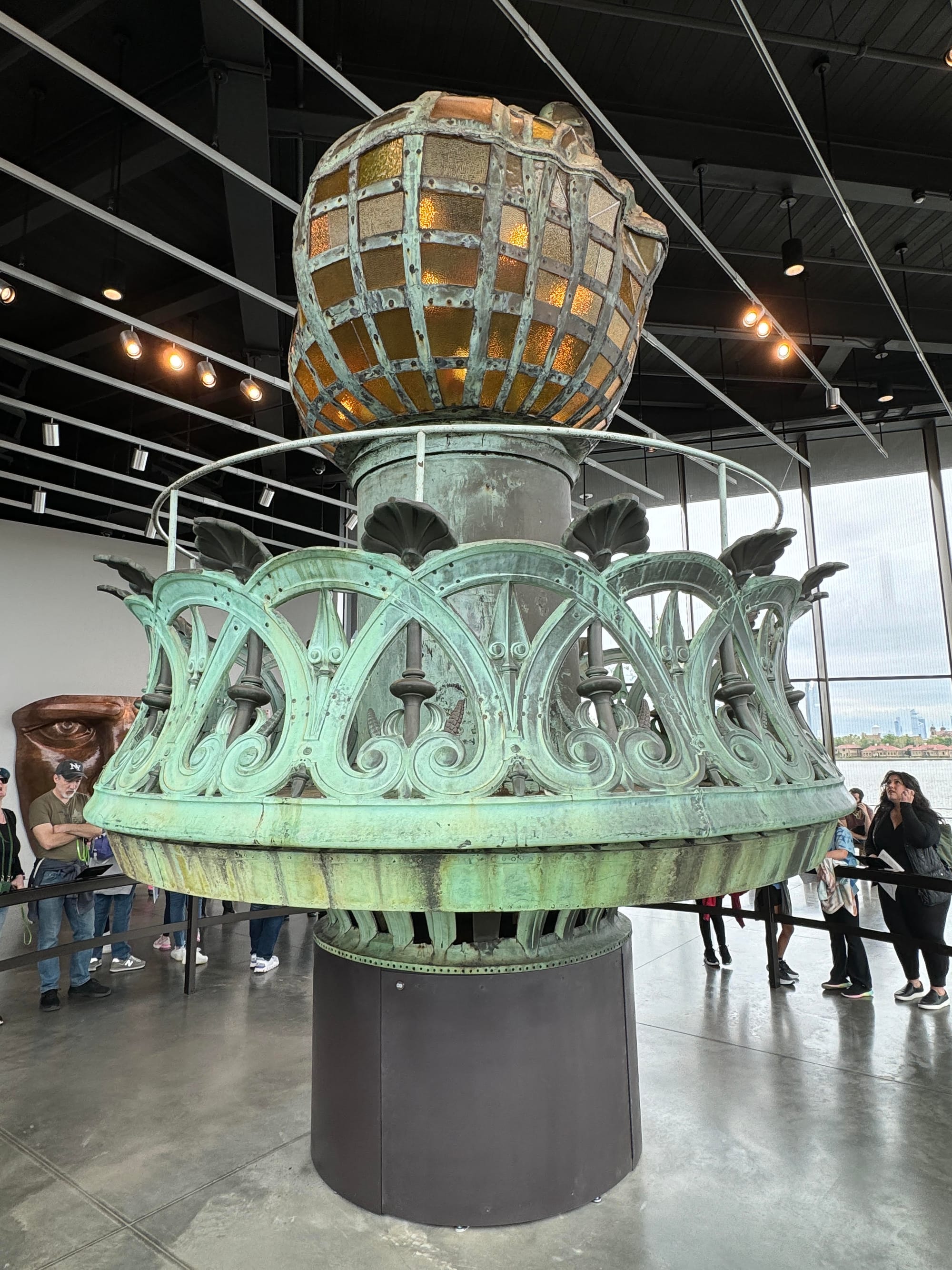
The sheets were shaped in France using the ancient repousse method in which the metal is hammered and shaped within large wooden molds. The finished pieces were then shipped to the United States where they were assembled and supported on an ingenious iron framework of armature bars and girders designed by Alexandre-Gustave Eiffel.
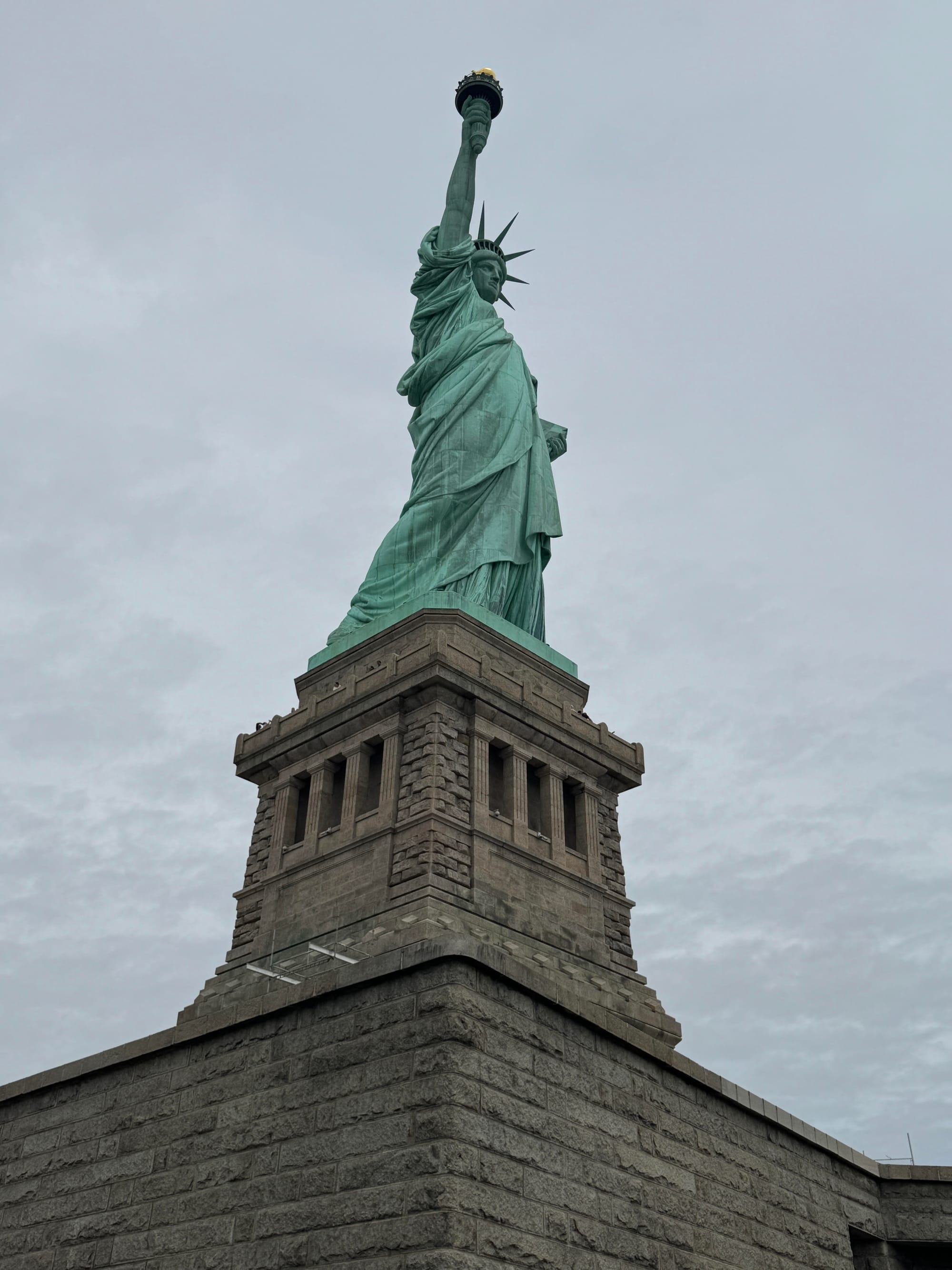
Why is the Statue Green?
At its inauguration, the Statue was the color of a reddish-brown penny. Over time, the Statue's skin turned green through patination, a chemical reaction that occurs when copper is exposed to moist air. This natural process formed layers of corrosion that actually protect the Statue.


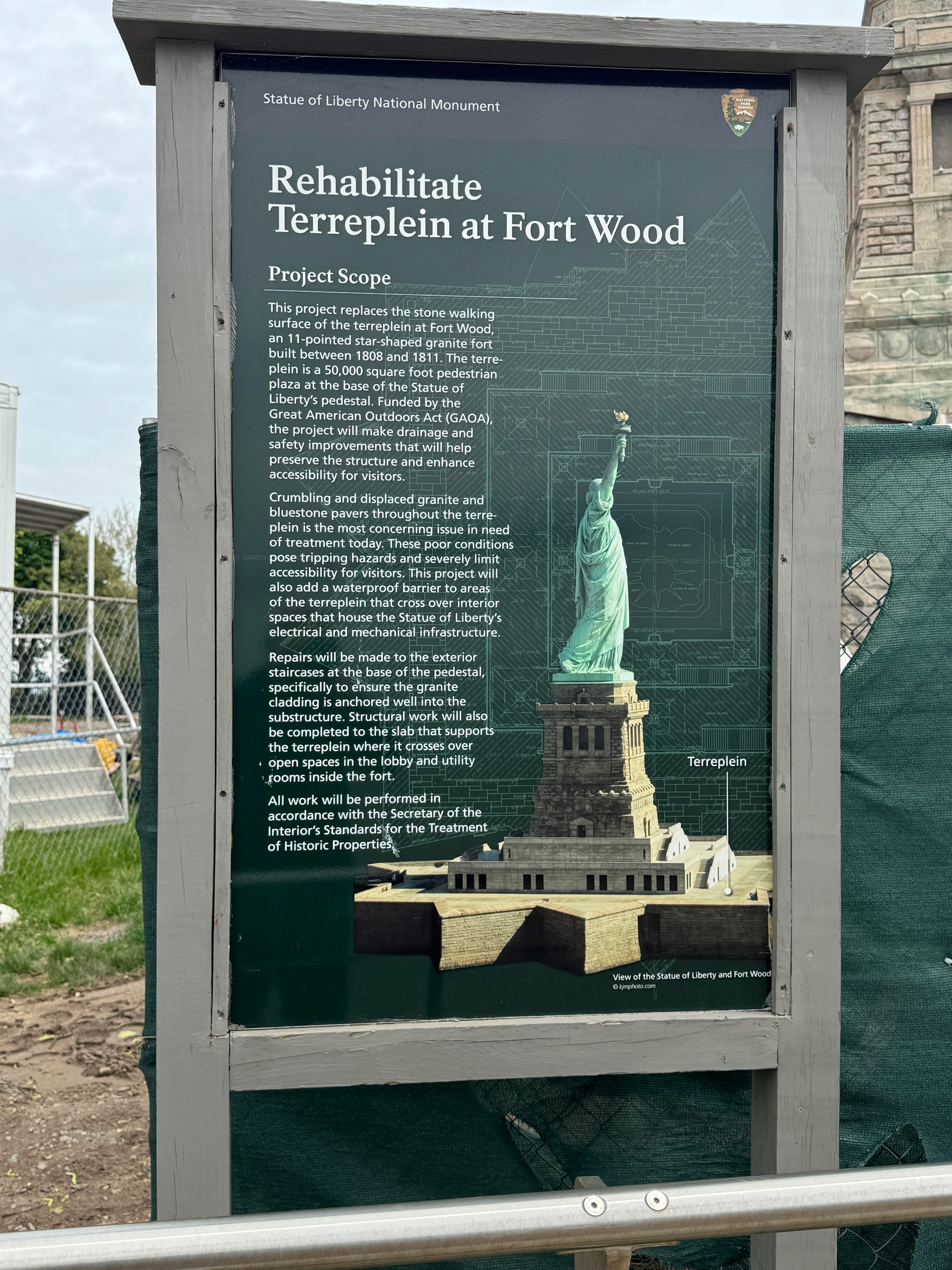
Fort Wood
Ste Statue of Liberty's pedestal sits on top of the remains of Fort Wood, originally one link in a change of defenses protecting New York City and it's vital harbor. The fort was built between 1808 and 1811 in the shape of an eleven-pointed star. The eleven-pointed star design was brought to North America by French military engineers in the 17th century.
For Wood acted as a lookout and defensive fortification with guns placed on top of its walls as well as a battery of guns entrenched near the shoreline. The fort was occupied by the War Department as an army post until 1937.
Rehabilitation of the Terreplein at Fort Wood
A current project underway at the site is replacing the stone walking surface of the terreplein at Fort Woo, an 11-pointed star-shaped granite for build between 1808 and 1811. The terreplain is a 50,000 square foot pedestrian plaza at the base of the Statue of Liberty's pedestal. Funded by the Great American Outdoor Act, the project will make drainage of safety improvements that will help preserve the structure and enhance accessibility for visitors.

Crumbling and displaced granite and bluestone pavers throughout the terreplain is the most concerning issue in need of treatment today. These poor conditions pose gripping hazards and severely limit accessibility for visitors. This project will also add a waterproof barrier to areas of the terreplain that cross over interior spaces that house the Statue of Liberty's electrical and mechanical infrastructure.
Repairs will be made to the exterior staircases at the base of the pedestal, specifically to ensure that granite cladding is anchored will into the substructure. Structural work will also be completed to the slab that supports the terreplein where it crosses over open spaces in the lobby and utility rooms inside the fort.
All work will be performed in accordance with the Secretary of the Interior's Standards for the Treatment of Historic Properties.
Liberty's Symbols
The Statue of Liberty conveys its message of freedom through several dramatic details. The broken shackles at the Statue's feel signify the emancipation of enslaved people and the end of tyranny. The tablet in the Statue's left arm represents the law. Written on the tablet in Roman numerals is the date of the American Declaration of Independence, July 4, 1776. The seven rays of the Statue's crown represent a sunburst spreading enlightenment and reason throughout the world. Most significant of all, however, the torch and flame symbolize Liberty Enlightening the World.
Perhaps no poem brings the torch and flame to life more than The New Colossus, a sonnet written my Emma Lazarus in 1883 to raise funds for the pedestal. In her poem, Lazarus characterized the Statue as the "Mother of Exiles" with her torch offering "world-wide welcome" – an image that has resonated deeply with many people.
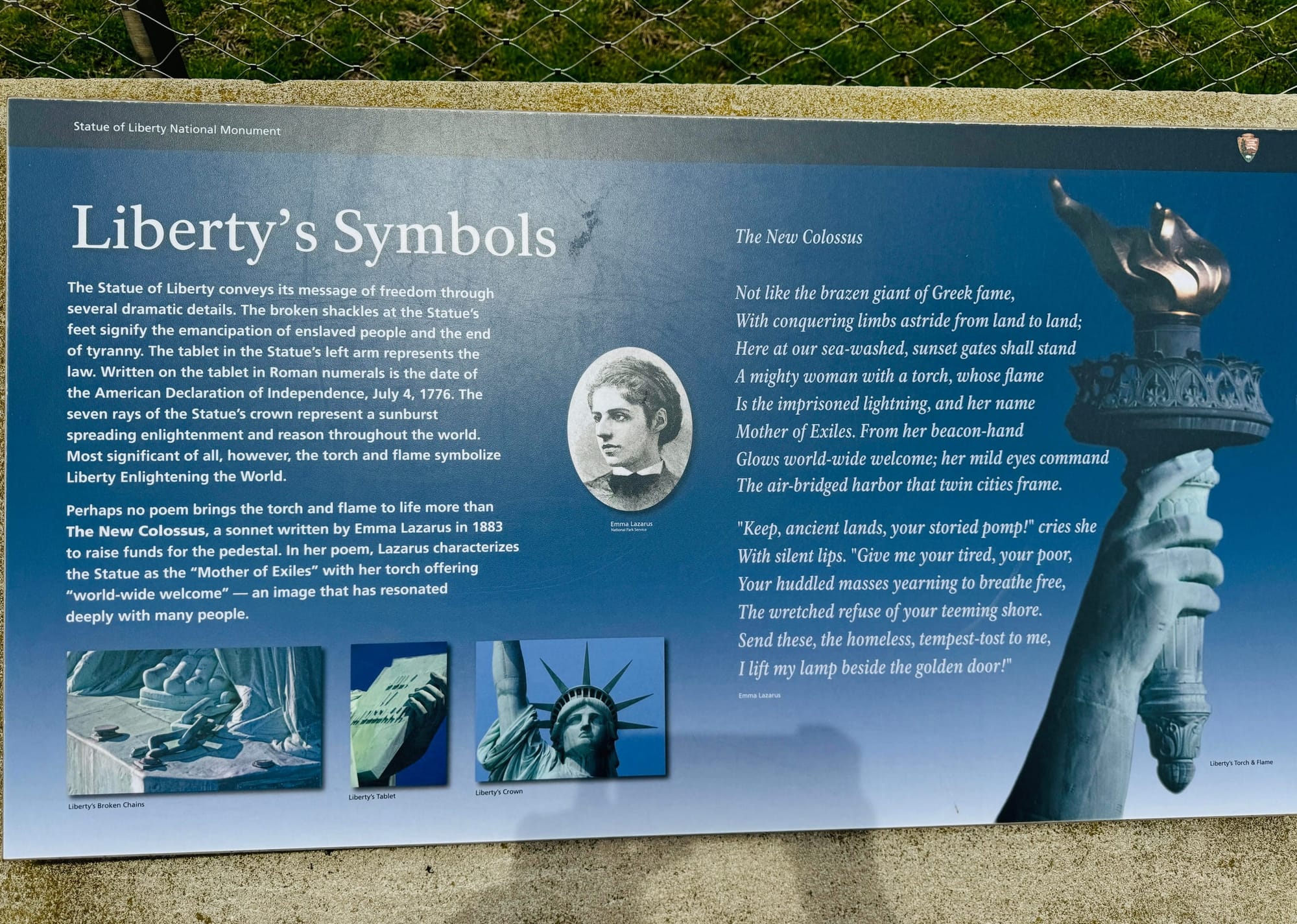
The New Colossus
Not like the brazen giant of Greek fame,
With conquering limbs astride from land to land;
Here at our sea-washed, sunset gates shall stand
A mighty woman with a torch, whose flame
Is the imprisoned lightning, and her name
Mother of Exiles. From her beacon-hand
Glows world-wide welcome; her mild eyes command
The air-bridged harbor that twin cities frame.
Keep ancient lands, your storied pomp!" cries she
With silent lips. "Give my your tired, your poor,
Your huddled masses yearning to breathe free,
The wretched refuse of your teeming shore.
Send these, the homeless, tempest-tost to me,
I lift my lamp beside the golden door!"
-- Emma Lazarus
